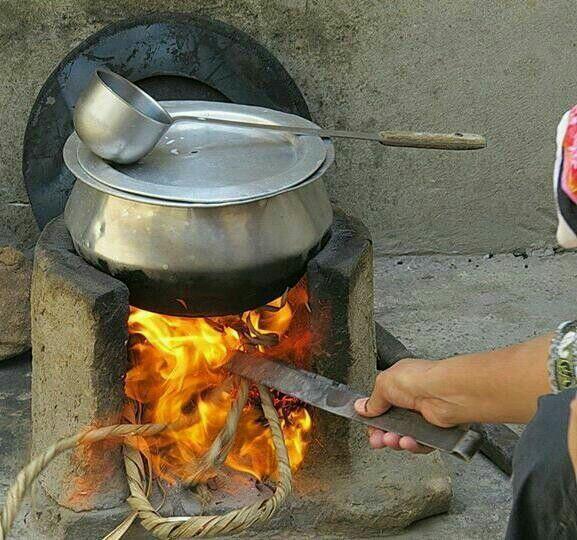
The Silent Killer: Understanding The Impact Of Biomass Smoke
An estimated 2.2 billion people worldwide rely on fuels like dung, crop residue, straw, kerosene, wood, tar, and even plastic for cooking. A staggering 44% of this population lives in Asia. The use of such fuels produces biomass smoke, a significant contributor to indoor air pollution. According to a report, in 2020 alone, 3.2 million deaths were linked to household air pollution caused by such fuels.
In Pakistan, the dangers of biomass smoke are often overlooked. Poverty or the lack of access to natural gas forces women to cook on clay stoves, disregarding their health as they prepare meals for their families. While fulfilling this daily responsibility, many unknowingly fall victim to numerous health issues.
Also Read: A Journey of Hope: Local Innovations Shine in the Fight Against Climate Change
Research reveals that cooking on clay stoves produces smoke equivalent to burning approximately 1,000 cigarettes. Imagine the harm from a single cigarette's smoke-now multiply it by a thousand. Yet, many people remain unaware of the damage they are inflicting upon themselves by using such stoves.
How Biomass Smoke Affects HealthWhen women use fuels like dung, straw, crop residue, kerosene, wood, or plastic to cook indoors, harmful carbon particles are released into the air. The smoke from clay stoves contains both black and white particles, as well as polycyclic aromatic hydrocarbons (PAHs), which are known to cause cancer in humans and animals.
This toxic smoke lingers inside homes, where it accumulates on clothes, walls, and even in the respiratory systems of the inhabitants. This leads to a host of health issues, including:
- Eye infections
- Asthma
- Allergies
- Respiratory diseases
- Persistent coughing
- Throat irritation
Wet wood smoke is particularly hazardous as it releases denser black fumes. To make matters worse, when women struggle to light wood, they often resort to using kerosene, doubling the toxicity of the smoke.
Not only is this smoke harmful to human health, but it also contributes to greenhouse gas emissions, posing a threat to the environment.
Why Do Women Still Use Clay Stoves?For many women, there's little choice. The absence of natural gas and the unaffordability of gas cylinders leave them with no option but to use clay stoves. Cooking, boiling water, and even heating during winter remain their responsibilities, often forcing them to rely on wood as a primary fuel source.
In many villages, families gather in a single room during winter, where wood is burned for heat. This practice exposes everyone to the harmful effects of wood smoke, though few realize the extent of the health risks involved.
The Way ForwardHealth is one of life's greatest blessings, and it deserves to be protected. Governments worldwide are making efforts to enhance the well-being of their citizens. Similarly, the Pakistani government must prioritize providing equitable access to eco-friendly energy solutions.
By ensuring the availability of clean energy sources, several goals can be achieved:
- Reduced health risks related to indoor air pollution
- Decreased deforestation
- Improved quality of life for rural populations
It's time to address this silent killer in kitchens and take meaningful steps toward a healthier, more sustainable future for all.

Legal Disclaimer:
MENAFN provides the information “as is” without warranty of any kind. We do not accept any responsibility or liability for the accuracy, content, images, videos, licenses, completeness, legality, or reliability of the information contained in this article. If you have any complaints or copyright issues related to this article, kindly contact the provider above.






















Comments
No comment